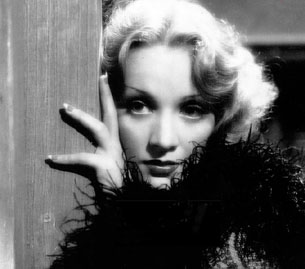
Yes, I know it's March. So what!
2008 was one of the best and worst years of my life. On the plus side, I graduated from college with high honors, presented a paper at Notre Dame, started my professional writing career, and reunited with my dog-child, Libby. Negatively speaking, my life was turned upside down shortly after graduation because of my impending move to Madison, WI. Though I hated my entire stay in Madison for many reasons, my gravest complaint about the situation is that it single-handedly withdrew me from cinema culture and my film project. Failure isn’t something I’m accustomed to or take lightly. I rarely quit something once I’ve started it. I’m sincerely sorry to everyone who joined-in on my feminist film bandwagon and felt let down by the sporadic posting.
However, I’m going to try and make amends by catching-up on some of the more important female-driven flicks I missed last year. Those reviews will appear alongside the new reviews of 2009 releases because I‘m going in for year two, round two with my project. Hopefully I’ll be all caught-up by the end of spring.
As it stands now, I don’t think it would be ethical for me to write my proposed essay on 2008 female cinema. I’ll wait until I feel I’ve seen enough 2008 releases to warrant that endeavor.
Until that day in May, I’ll leave you with my mishmash of a top ten list. I think it accurately represents my very weird (but mostly awesome) taste in movies. I keep looking at this list and wondering what in the hell it must say about me. But if you’re reading it, then you probably know that I’m more interested and attracted to films that attempt to tread new thematic ground instead of meandering through the same old shit over and over again. All ten of these flicks, as varied as they are in budget and genre, are brave, brazen works of art that made a significant impact upon my way of thinking and feeling. They’re also films you won’t generally find on most generic top ten lists. I love
Wall-E as much as the rest of ’em, but it’s been written about enough.
Aside from
The Last Mistress (which is my favorite flick of ‘08), they are presented in no particular preferential order:
Ahem...
 The Last Mistress
The Last Mistress (2007, Catherine Breillat)
Asia Argento is my favorite presence in 2008 cinema. While her other efforts this past year (
Boarding Gate, Mother of Tears) were more or less under appreciated by the greater cinephile world, I’m very grateful that
The Last Mistress earned some well-deserved praise and recognition. As an actress, I find Argento perfectly suited for the melding and melting of the great cinematic auteurs and their projects. Much like Deneuve and Magnani in their prime, her unique style transcends language, genre, and even gender conventions.
However, I don’t think her specific knack was fully utilized until Breillat cast her as the enigmatic La Vellini, a fiery French/Spanish coquette who, despite her better judgment, is drawn to the flame of eternal love with a subtly charming, social-climbing scallywag named Ryno de Marigny (Fu‘ad Ait Aattou). Though they’ve basically been together for ten years, Ryno is set to end their relationship permanently because he is about to marry a virtuous, boring heiress for financial security.
Breillat may not be the most skilled contemporary cinematic artist working today, but her compositions for
The Last Mistress (which are full of dramatic reds, whites, and blacks) are candid pathways to classic romance. The passion Vellini and Ryno feel for one another as well as the plights they encounter greatly remind me of a dirty version of Rochester and Jane Eyre in Bronte’s novel or even Scarlett and Rhett in
Gone with the Wind. It’s epic in emotion and enduring in intimacy.
But classic doesn’t always have to mean “stilted.” Though
The Last Mistress is a period piece and the exhibited themes are as old as time, the combination of Breillat’s modern sexual flare for storytelling and Argento’s fearless chutzpah makes the material feel light, fresh and deeply affecting.
Like the blood Vellini sucks and licks from Ryno’s bullet wound,
The Last Mistress is dripping wet with cinematic fervor and everlasting romance. I've already seen it three times and I can't wait to watch it again.
The Genre and Gender-Benders with a Super Natural FlareMad Detective (2007, Johnnie To)
Let the Right One In (2008, Tomas Alfredson)
 Mad Detective
Mad Detective: Johnnie To is one of contemporary cinema’s greatest treasures. Like
Exiled and the
Election duo,
The Mad Detective addresses masculinity and male kinship in a sensitive, almost trusting fashion that is really unique. There’s no useless dick-swagger or one-upsmanship in the To world, just a lot of sweet bad ass guys and (some) gals who know how to use weapons effectively and purposefully. Plus, the film is really funny, bat-shit insane, and full of weird mythology.
 Let the Right One In: As a bit of a vampire fiend, I applaud Let the Right One In’s ability to simultaneously distance itself from traditional vampire fare through the relationship of the main characters and somehow stay true to its mythological roots by simple integration. The fact that Eli is a vampire is secondary to the essential building blocks of their coming of age tale. Sadly, this flick is already slated for a remake by the likes of JJ Abrams – a film that will no doubt take away all of the mystique and sensitivity of the original. Plus, Eli will undoubtedly be a girl and the tender gender-bender angle will be lost in the process.
Let the Right One In: As a bit of a vampire fiend, I applaud Let the Right One In’s ability to simultaneously distance itself from traditional vampire fare through the relationship of the main characters and somehow stay true to its mythological roots by simple integration. The fact that Eli is a vampire is secondary to the essential building blocks of their coming of age tale. Sadly, this flick is already slated for a remake by the likes of JJ Abrams – a film that will no doubt take away all of the mystique and sensitivity of the original. Plus, Eli will undoubtedly be a girl and the tender gender-bender angle will be lost in the process.
The Cheese Stands Alone
Roman Polanski: Wanted and Desired (2008, Marina Zenovich)
 I’ve already written about this one here. Similarly to The Thin Blue Line, Zenovich dissects the entrails of this chaotic court case and unravels the truth entangled within it. Her efforts may have allowed Polanski to come back to the US if he wants to as well.
I’ve already written about this one here. Similarly to The Thin Blue Line, Zenovich dissects the entrails of this chaotic court case and unravels the truth entangled within it. Her efforts may have allowed Polanski to come back to the US if he wants to as well.
The Weird and the Whimsy: Two Underrated Gems
Boarding Gate (2007, Olivier Assayas)
Be Kind Rewind (2008, Michel Gondry)
 Boarding Gate: Dirty-pretty is the term I’d use to describe Boarding Gate. It’s messy, kind of slutty, and chockfull of Assaya’s jet-setting, sleek aesthetics. While it lacks the soul of Clean and the cinematic pulse of Demonlover and Irma Vep, I’m somehow more passionately drawn to Boarding Gate than any of his other flicks. Go figure?
Boarding Gate: Dirty-pretty is the term I’d use to describe Boarding Gate. It’s messy, kind of slutty, and chockfull of Assaya’s jet-setting, sleek aesthetics. While it lacks the soul of Clean and the cinematic pulse of Demonlover and Irma Vep, I’m somehow more passionately drawn to Boarding Gate than any of his other flicks. Go figure?
 Be Kind Rewind: Sadly, earnest cinema is mostly a thing of the past. Films today are either too self-aware of their intentions or too auto-fellatious (I’m looking at you, Quentin Tarantino) to pull it off. That’s why it’s so remarkable that a big-budgeted flick that references countless blockbusters and starring Jack Black succeeds so admirably. It also celebrates history and the importance of a close-knit community in this otherwise commercial world. Plus, it’s absolutely whimsical! The references and good-natured feelings practically bounce off the screen with vivacity and warmth.
Be Kind Rewind: Sadly, earnest cinema is mostly a thing of the past. Films today are either too self-aware of their intentions or too auto-fellatious (I’m looking at you, Quentin Tarantino) to pull it off. That’s why it’s so remarkable that a big-budgeted flick that references countless blockbusters and starring Jack Black succeeds so admirably. It also celebrates history and the importance of a close-knit community in this otherwise commercial world. Plus, it’s absolutely whimsical! The references and good-natured feelings practically bounce off the screen with vivacity and warmth.
I Promise They’re Not Porn
Itty Bitty Titty Committee (2008, Jamie Babbit)
Midnight Meat Train (2008, Ryuhei Kitamura)
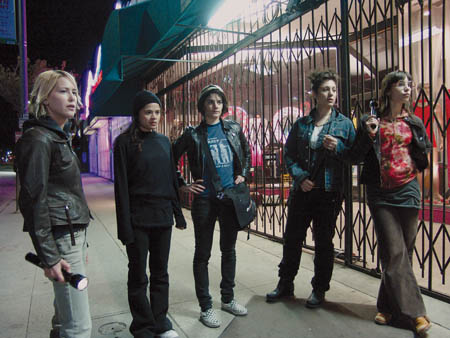 Itty Bitty Titty Committee: This is what Jessica Valenti’s rant-happy Full Frontal Feminism should have felt like. I wish I could have seen a movie like this when I was a teenager because it would have made the “f” word seem much more tangible and realistic. It’s a great introduction to feminism because it’s not pandering or self-conscious about its intentions and makes feminism appealing in a fun, political fashion. It would have played much better on the festival circuit and on DVD if it didn’t have such a terrible name. Many video stores refused to carry it because they thought it was porn. Hopefully it’ll become a classic much like Babbit’s other film, But, I’m a Cheerleader.
Itty Bitty Titty Committee: This is what Jessica Valenti’s rant-happy Full Frontal Feminism should have felt like. I wish I could have seen a movie like this when I was a teenager because it would have made the “f” word seem much more tangible and realistic. It’s a great introduction to feminism because it’s not pandering or self-conscious about its intentions and makes feminism appealing in a fun, political fashion. It would have played much better on the festival circuit and on DVD if it didn’t have such a terrible name. Many video stores refused to carry it because they thought it was porn. Hopefully it’ll become a classic much like Babbit’s other film, But, I’m a Cheerleader.
 Midnight Meat Train: A contemporary horror film with a social conscience? Get out of here! Based on Clive Barker’s short story of the same name, Midnight Meat Train is a taut thriller with lots of amazing, eye-popping gore (snicker, snicker) that also acts as a scathing critique of the modern art world. Plus, the relationships existing between each of the characters feels genuine and human, unlike other recent horror flicks where all of those assets are taken for granted.
Midnight Meat Train: A contemporary horror film with a social conscience? Get out of here! Based on Clive Barker’s short story of the same name, Midnight Meat Train is a taut thriller with lots of amazing, eye-popping gore (snicker, snicker) that also acts as a scathing critique of the modern art world. Plus, the relationships existing between each of the characters feels genuine and human, unlike other recent horror flicks where all of those assets are taken for granted.
Socially Conscious without being Self-Conscious
It’s a Free World…(2007, Ken Loach)
Frozen River (2008, Courtney Hunt)
 It’s a Free World…: Speaking of scathing critiques, this Ken Loach picture doesn’t let anyone off the hook with its wise look at our capitalistic system. I don’t really want to talk about the story because it’s such an impacting experience all the way through, but the film really is a forceful sledgehammer of intentionally exploitive circumstances.
It’s a Free World…: Speaking of scathing critiques, this Ken Loach picture doesn’t let anyone off the hook with its wise look at our capitalistic system. I don’t really want to talk about the story because it’s such an impacting experience all the way through, but the film really is a forceful sledgehammer of intentionally exploitive circumstances.
 Frozen River: Unlike Wendy and Lucy or even The Wrestler, Frozen River understands that poverty, while it certainly sucks, isn’t an entirely black and white situation. Being poor forces you to be creative and grateful for what comes. No one in this movie just sits around and mopes because they’re unfed, poorly paid or flat broke, they go out into the world and try to make their lives better. Alas, some of their choices aren’t always the right ones, but they don’t wriggle out of their mistakes either. It’s refreshing to see characters facing everything in their lives head-on. I can’t wait to see what Courtney Hunt does next.
Frozen River: Unlike Wendy and Lucy or even The Wrestler, Frozen River understands that poverty, while it certainly sucks, isn’t an entirely black and white situation. Being poor forces you to be creative and grateful for what comes. No one in this movie just sits around and mopes because they’re unfed, poorly paid or flat broke, they go out into the world and try to make their lives better. Alas, some of their choices aren’t always the right ones, but they don’t wriggle out of their mistakes either. It’s refreshing to see characters facing everything in their lives head-on. I can’t wait to see what Courtney Hunt does next.
 Honorable Mentions:
Honorable Mentions:
Shotgun Stories, Girls Rock!, and Caramel.
Mainstream Flicks I Loved:
Wall-E and Milk.
Ones I Liked:
The Dark Knight, Happy-Go-Lucky, Rachel Getting Married, Encounters at the End of the World, Reprise, Mother of Tears, The Wrestler, Curious Case of Benjamin Button, Body of Lies, Flight of the Red Balloon, Christmas Tale, Paranoid Park, etc.
Biggest Disappointments:
Wendy and Lucy, Changeling, Sex and the City, and though my expectations certainly weren’t very high to begin with, Iron Man. Ugh.
Shit List:
The Reader, Gran Torino, Australia, Indiana Jones and the Kingdom of the Crystal Skull, and too many more to mention.
 Sad I missed:
Sad I missed:
Duchess of Langeais, Synecdoche, NY, Fear(s) of the Dark, The Pool, Sparrow, Bachelor Machines, Chop Shop, In The City of Sylvia, Quantum of Solace (kind of…), Sylvia Scarlett at the Gene Siskel Film Center, The Tenant at the Music Box, Last Year at Marienbad at the Music Box, Lola Montes at the Music Box, and probably more.

Archival/Retrospective Highlights of 2008:
- An American in Paris & Meet Me in St. Louis (July, The Music Box)
- The Young Girls of Rochefort (April (?), Rosenbaum’s Transition series at the Gene Siskel Film Center)
- Who’s Afraid of Virginia Woolf? (April, Wisconsin International Film Festival)
- The Big Country (April, Wisconsin International Film Festival)
- Man Who Shot Liberty Valance (May, Rosenbaum’s Transition Series at the Gene Siskel Film Center)
- Max Ophuls retrospective (Fall, UW-Madison)
- Text of Light (March, White Light Series at La Salle Bank Cinema/Bank of America Cinema)
- Posthumously Yours: The Films of Zack Stiglicz (January, Gene Siskel Film Center)
- Insect Woman (Imamura retrospective, Gene Siskel Film Center)
- 4th Annual Horror Movie Massacre (October, Music Box). Highlights: Old Dark House, Dead Alive, Phantom of the Paradise, Keaton’s The Haunted House, and the aforementioned Midnight Meat Train.
- Day of Wrath (December, Music Box)
Favorite DVD Releases/Discoveries:
Releases:

- Kenji Mizoguchi’s Fallen Women (Street of Shame, Sisters of the Gion, Osaka Elegy, Women of the Night), Eclipse Series #13
- Ernst Lubitsch’s Musicals (Smiling Lieutenant, Monte Carlo, Love Parade, One Hour with You), Eclipse Series #8
- Bette Davis Collection vol. 3 (Old Maid, In this Our Life, All This, And Heaven Too, Deception, The Great Lie, Watch on the Rhine), Warner Bros.
- An American in Paris SE, Warner Bros.
- Gigi SE, Warner Bros.
Discoveries:
 - Buffy the Vampire Slayer TV Series
- Buffy the Vampire Slayer TV Series
- The Quiet (2005, Jamie Babbit)
- Flying: Confessions of a Free Woman (2006, Jennifer Fox)
- Pilgrimage (1933, John Ford)

Movies I’m Looking Forward to Most in 2009:
The Imaginarium of Dr. Parnassus, Public Enemies, Bronson, Tree of Life, Up, Bright Star, Puffball, Summer Hours, Bad Lieutenant: The Port of New Orleans, and lots more.
Favorite Actress: Asia Argento for The Last Mistress, Boarding Gate, and The Mother of Tears.
Favorite Actor: Michael Shannon for Shotgun Stories and Revolutionary Road.
Lastly, I'd like to thank all of the following cinematic institutions for showing all these great movies:
Music Box Theatre
The Gene Siskel Film Center
Doc Films
Landmark Century Centre Cinema
White Light Cinema Series
The Nightingale
Bank of America Cinema
AMC River East 21
Facets Cinematheque
Please, do your best to support these Chicago institutions by attending their movies. Aside from the AMC and Landmark, they’re all (mostly) independent venues that would certainly benefit from your attendance.
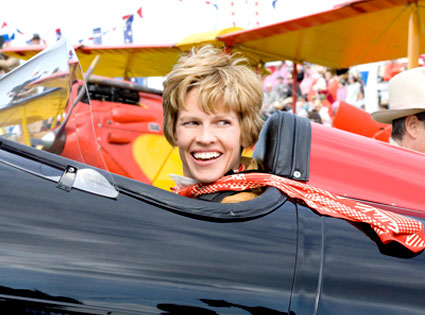


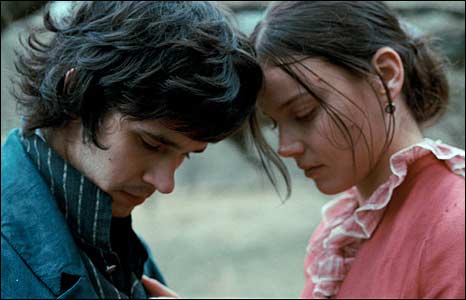

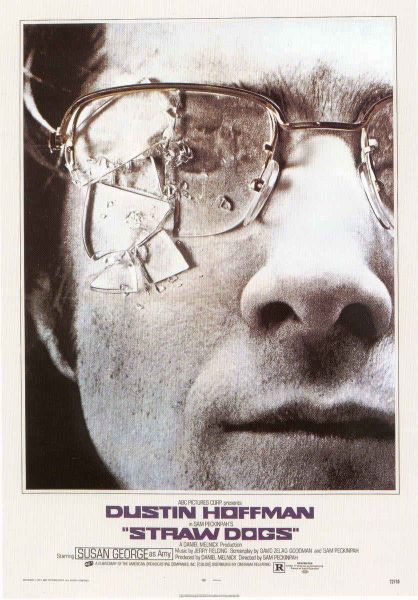



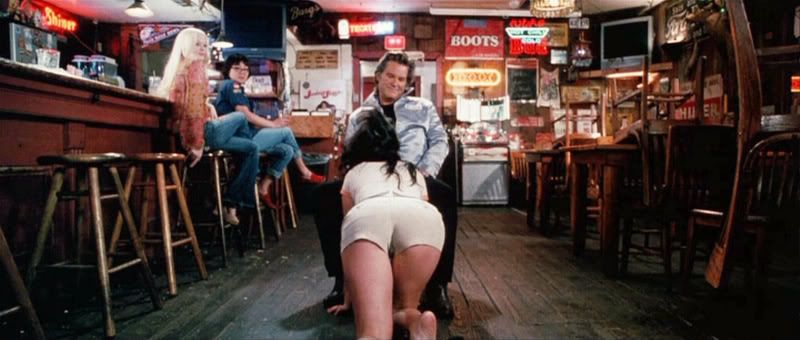


















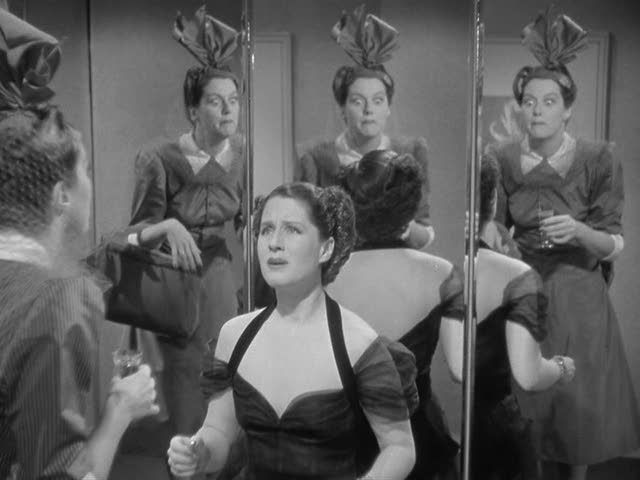
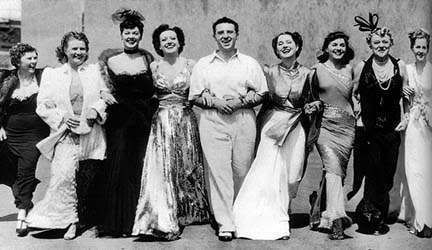




















.jpg)






